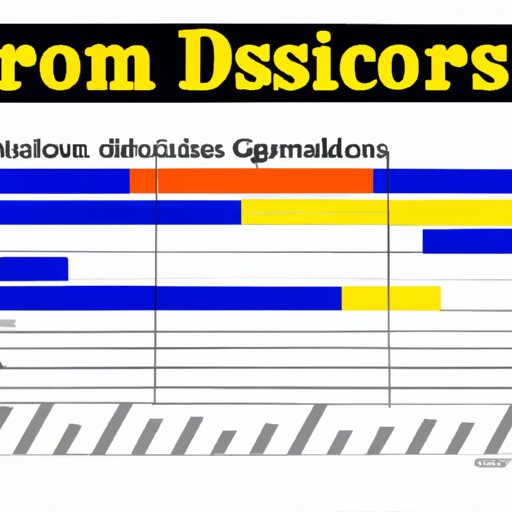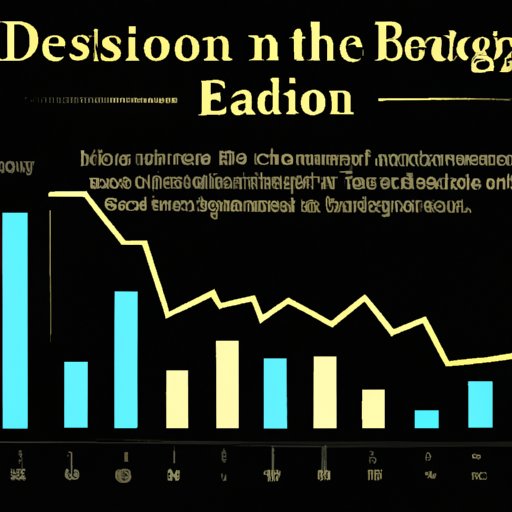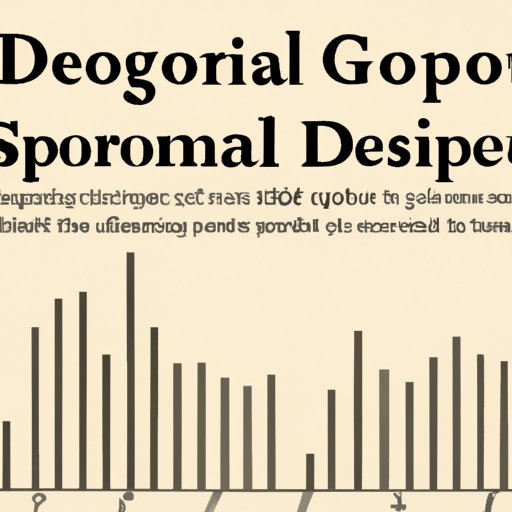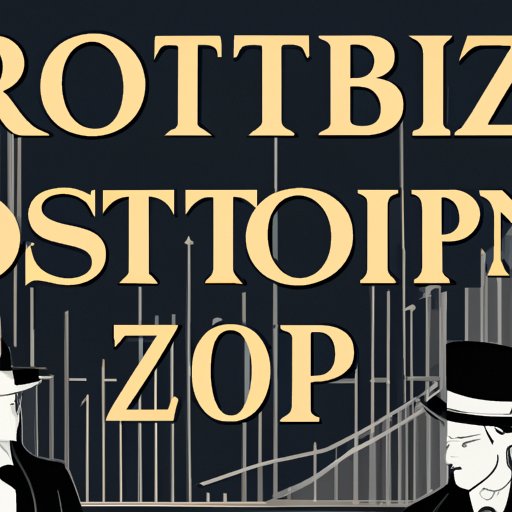Introduction
The Roaring 20s is a term that has come to represent an era of unbridled optimism and economic prosperity. Popularly known as the Jazz Age, it was a decade filled with innovative new technologies, unprecedented consumerism, and a booming economy. However, the Roaring 20s eventually gave way to the Great Depression, a catastrophic event that changed the course of history. This article will explore the various ways in which the Roaring 20s led to the Great Depression and discuss what we can learn from this period of economic upheaval.

Analyzing the Causes of the Great Depression Through the Roaring 20s
In order to understand how the Roaring 20s contributed to the Great Depression, it is important to examine the various economic and social factors that were at play during this time. Specifically, we will look at economic booms and busts, stock market speculation, and government policy. Each of these elements played an important role in creating the conditions for the Great Depression.

Exploring How Economic Booms and Busts Contributed to the Great Depression
One of the key elements of the Roaring 20s was the emergence of consumer debt. As people began to purchase more goods on credit, they were also taking out loans to finance their purchases. This created a cycle of boom and bust in the economy, as people borrowed more money than they could pay back. This cycle of overspending and overextending eventually led to an economic collapse.
In addition, the agricultural sector was experiencing its own boom and bust cycle. Overproduction of certain crops caused prices to plummet, leading to widespread financial hardship for farmers. This, combined with the decline in international trade due to tariffs and taxes, further exacerbated the economic crisis.
Examining Stock Market Speculation in the Roaring 20s and its Impact on the Great Depression
Another major factor in the lead up to the Great Depression was the rise of stock market speculation. During the Roaring 20s, margin buying became increasingly popular, allowing investors to purchase stocks with borrowed money. This allowed stock prices to skyrocket, creating a false sense of security and leading to reckless investments.
When the stock market crashed in 1929, it sent shockwaves through the economy. People lost their savings and businesses went bankrupt, leading to a severe decrease in employment and a sharp increase in poverty. This set the stage for the Great Depression.
Investigating the Role of Government Policy in Creating the Great Depression
Government policy also played an important role in creating the conditions for the Great Depression. The Federal Reserve failed to take action to prevent the stock market crash, and the government imposed high tariffs and taxes, which further hampered international trade. In addition, banks were poorly regulated, leading to reckless lending practices and a lack of oversight.
Understanding the Ripple Effects of the Roaring 20s Boom and Bust Cycle
The economic instability caused by the Roaring 20s had far-reaching consequences. Unemployment rose sharply, poverty increased, and the economy was thrown into chaos. Many people lost faith in the stock market, causing a decrease in investment in new businesses, and anti-immigrant sentiment rose as people looked for someone to blame for their financial woes.

Evaluating the Social and Cultural Consequences of the Roaring 20s on the Great Depression
It is clear that the Roaring 20s had an immense impact on the Great Depression. The economic booms and busts, stock market speculation, and government policy all contributed to the devastating effects of the Great Depression. It is essential to understand the ripple effects of the Roaring 20s in order to prevent similar economic catastrophes from happening in the future.
Conclusion
The Great Depression was a catastrophic event that changed the course of history. The causes of the Great Depression are complex, but there is no doubt that the Roaring 20s played an important role. The emergence of consumer debt, overproduction in the agricultural sector, and speculative investments in the stock market all contributed to the economic collapse. In addition, government policy and social and cultural changes further exacerbated the situation. By understanding the links between the Roaring 20s and the Great Depression, we can learn valuable lessons and take steps to prevent similar economic disasters from occurring in the future.
(Note: Is this article not meeting your expectations? Do you have knowledge or insights to share? Unlock new opportunities and expand your reach by joining our authors team. Click Registration to join us and share your expertise with our readers.)
